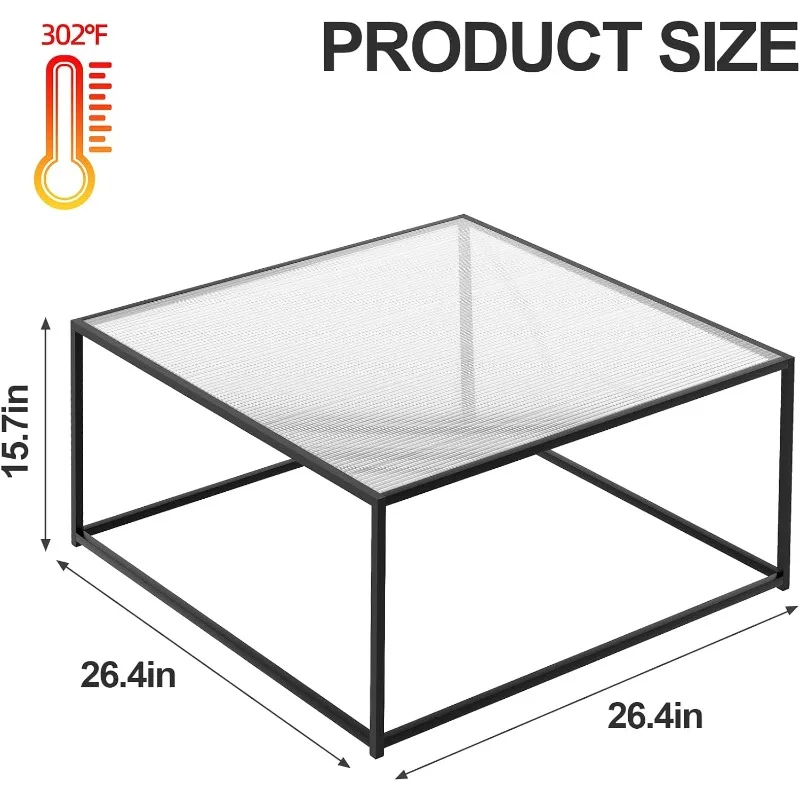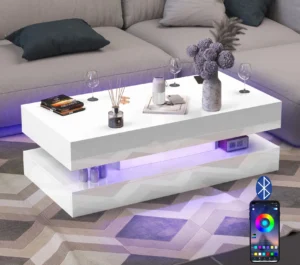Introduction: Why Long Rectangular Tables Are the Designer’s Secret Weapon
Long rectangular tables—typically measuring at least 6 feet in length with a width-to-length ratio of approximately 1:2 or greater—have established themselves as foundational elements in thoughtful interior design. These versatile pieces serve as elegant solutions for diverse spaces, from intimate dining rooms to expansive event venues.
Proper space planning with rectangular tables isn’t just about aesthetics—it’s essential for ensuring functionality, comfort, and flow within any environment. The enduring popularity of rectangular tables stems from their remarkable adaptability and practical benefits:
- Maximized seating capacity for gatherings of all sizes
- Efficient use of available floor space, especially in rectangular rooms
- Visual anchoring that establishes clear spatial boundaries
- Versatility for multiple functions beyond dining
The clean, architectural lines of rectangular tables perfectly embody mid-century modern design principles that continue to influence contemporary interiors. Understanding the rectangular coffee table design features provides a solid foundation for incorporating these versatile pieces into your space planning.
Whether you’re furnishing a home, planning an event, or designing a commercial space, this guide will equip you with expert strategies to make the most of mid-century modern rectangular coffee tables and their larger counterparts for optimal space utilization.
The Undeniable Advantages of Long Rectangular Tables in Space Planning
When it comes to practical space planning, rectangular tables offer distinct benefits that make them indispensable tools for designers and homeowners alike.
Space Efficiency Superiority
Rectangular tables excel at utilizing wall space efficiently, making them approximately 30% more space-efficient than round tables of comparable seating capacity. Their straight edges allow for seamless placement against walls, in corners, or aligned with room perimeters, maximizing usable floor area while minimizing dead space.
Seating Capacity Benefits
The extended perimeter of rectangular tables accommodates more people in less space compared to circular alternatives. A 6-foot rectangular table comfortably seats 6-8 people, while a round table with equivalent area typically seats only 4-6, making rectangular options significantly more efficient for larger gatherings.
Flexibility for Various Room Shapes
Rectangular tables adapt beautifully to:
– Long, narrow spaces where they can mirror room proportions
– Large, open areas where they establish clear zones
– Smaller rooms where they can be placed against walls to preserve traffic flow
– Outdoor spaces where they create defined gathering areas
Aesthetic and Functional Advantages
– Clean lines create natural visual flow that guides the eye
– Defined head and foot positions establish clear hierarchy for formal settings
– Clear division of table sections facilitates organization for different activities
– Easier conversation management compared to large round tables where distance can impede interaction
Transforming room layout rectangular coffee tables and their dining counterparts fundamentally reshape how people interact with and experience a space, making them powerful tools in thoughtful interior design.
Rectangular vs. Other Table Shapes: Making the Strategic Choice
Understanding how rectangular tables compare to other shapes helps inform the most appropriate choice for your specific space and needs. The right selection balances practical considerations with aesthetic preferences and functional requirements.
| Feature | Rectangular | Round | Square | Oval |
|---|---|---|---|---|
| Space efficiency | Excellent | Poor | Good | Good |
| Seating capacity | Highest | Moderate | Limited by size | High |
| Conversation flow | Directional | Equal for all | Equal for all | Balanced |
| Visual impact | Structured, defined | Soft, flowing | Stable, balanced | Elegant compromise |
| Room compatibility | Most versatile | Works in square rooms | Square rooms | Similar to rectangular |
| Space required | Length-dependent | Diameter plus clearance | Width plus clearance | Length-dependent |
Rectangular vs. Round
While rectangular tables emphasize efficiency and structure, round tables promote equality and intimate conversation. A rectangular table might seat 8 people in a space where a round table comfortably seats only 6, but round tables eliminate the hierarchy of “head” positions and ensure everyone can see each other easily.
Rectangular vs. Square
Square tables present perfect symmetry but become impractical beyond certain dimensions. Once a square table exceeds about 5 feet per side, conversation across the diagonal becomes difficult. Rectangular tables solve this by extending in just one dimension, maintaining a comfortable width for interaction.
Rectangular vs. Oval
Oval tables offer a compelling middle ground, combining rectangular efficiency with softened corners that ease movement around the space. However, they still require more clearance than rectangular options and don’t align as cleanly with walls or other furniture.
Spaces naturally suited for rectangular tables include:
– Narrow rooms where other shapes would restrict movement
– Formal dining settings where hierarchical seating is desired
– Multipurpose areas requiring flexible configurations
– Rooms with linear architectural features
Understanding the distinct differences between oval vs rectangular coffee tables applies equally to dining and conference tables, helping you make informed decisions for any setting.
6 Classic Layout Configurations for Long Rectangular Tables
Each of these time-tested configurations offers specific advantages for different purposes and spaces. Understanding their characteristics helps you select the optimal arrangement for your specific needs.
1. Banquet Style (Parallel Rows)
This arrangement places multiple rectangular tables in long parallel rows, maximizing seating capacity in a defined space.
– Best for: Large-scale dining events, formal receptions, cafeterias
– Pros: Maximizes seating capacity, creates clear walking paths, efficient service routes
– Cons: Limited interaction between rows, formal/institutional feel
– Space requirements: Allow 60 inches (152 cm) between table centers for back-to-back seating
2. U-Shape Configuration
Rectangular tables arranged in a U pattern create a focal point at the open end.
– Best for: Presentations, training sessions, small conferences
– Pros: Creates clear presenter position, facilitates group discussion, allows for central demonstrations
– Cons: Limits total seating capacity, requires larger room
– Space requirements: Minimum 12×18 feet (3.7×5.5 m) for a basic U-shape accommodating 12-16 people
3. Classroom Style
Tables arranged in rows all facing in one direction, similar to a traditional classroom.
– Best for: Educational settings, workshops, note-taking sessions
– Pros: Clear sight lines to presenter/front, efficient use of space, structured environment
– Cons: Limited interaction between participants, formal atmosphere
– Space requirements: Allow 30 inches (76 cm) per person width, plus 42 inches (107 cm) between rows
4. Boardroom Layout
A single large rectangular table or several tables joined to create one long surface.
– Best for: Decision-making meetings, discussions requiring equal participation
– Pros: Everyone faces each other, equal status for participants, focused interaction
– Cons: Limited to smaller groups (typically under 20) for effective communication
– Space requirements: Allow 30 inches (76 cm) per person with minimum 4 feet (122 cm) clearance around perimeter
5. Family-Style/Communal
Long tables designed for shared dining experiences with food placed centrally.
– Best for: Casual dining, interactive meals, building community
– Pros: Encourages food sharing, facilitates conversation, creates intimate atmosphere
– Cons: Can feel crowded, limited privacy, requires careful food placement
– Space requirements: Allow 24 inches (61 cm) width per person with generous table center for serving dishes
6. Herringbone/Chevron Pattern
Tables arranged at complementary angles, creating a zigzag or chevron pattern.
– Best for: Large spaces with challenging sightlines, event venues
– Pros: Improved visibility to central point, interesting visual pattern, breaks up monotony
– Cons: Creates some awkward angles, less efficient use of space
– Space requirements: Approximately 15% more floor space than straight rows
For larger spaces requiring substantial surface area, large coffee tables in similar configurations can define conversation and activity zones while maintaining visual cohesion.
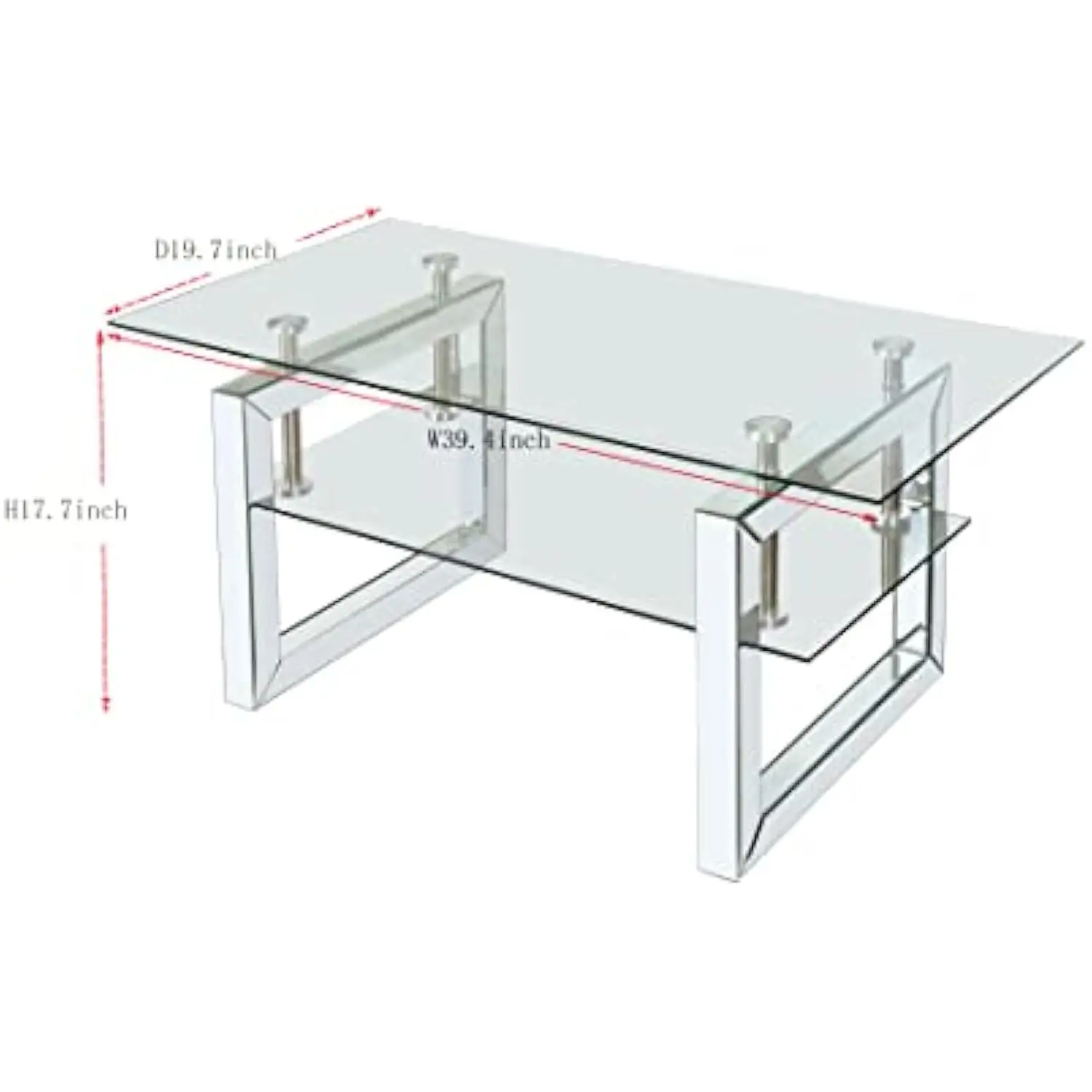
Creative & Hybrid Layouts: Thinking Beyond Convention
Breaking free from traditional arrangements allows you to craft unique spatial experiences that address specific needs while making a distinctive design statement.
X-Shape and Cross Configurations
Intersecting rectangular tables create dynamic interaction hubs where multiple conversation groups can form while maintaining connection to the larger gathering. This arrangement works particularly well for collaborative workspaces or networking events where spontaneous small-group discussions benefit from proximity to other conversations.
Serpentine Arrangements
By placing rectangular tables in gentle curves or S-patterns, you create organic flow that softens the inherent linearity of rectangular tables. This approach:
– Adapts beautifully to irregularly shaped spaces
– Creates visual interest and movement
– Maintains the efficiency of rectangular tables while adding unexpected fluidity
– Works exceptionally well for buffet setups and exhibition displays
Offset Row Strategies
Rather than aligning tables in perfect rows, slight offsets can dramatically improve sightlines:
– Stagger rows so guests sit in the gaps between those ahead of them
– Create slight angles between adjacent tables to open visual pathways
– Vary table lengths within rows to break uniformity while maintaining order
Mixed Shape Integration
Combining rectangular tables with other shapes creates versatile, visually interesting environments:
– Round tables at the ends of rectangular arrangements soften transitions
– Small square tables between rectangular sections create natural breakpoints
– Curved or angled connection pieces between rectangular segments add architectural interest
These creative approaches demonstrate why space planning with oversized mid-century coffee tables requires thoughtful consideration of both practical requirements and aesthetic impact.
Essential Space Planning Measurements: The Designer’s Formula
Precise measurements form the foundation of successful space planning with rectangular tables. These standards ensure both comfort and functionality while maximizing available space.
Standard Long Rectangular Table Dimensions
| Table Length | Width | Height | Seating Capacity |
|---|---|---|---|
| 6 ft (183 cm) | 30-36 in (76-91 cm) | 29-30 in (74-76 cm) | 6-8 people |
| 8 ft (244 cm) | 30-48 in (76-122 cm) | 29-30 in (74-76 cm) | 8-10 people |
| 10 ft (305 cm) | 36-60 in (91-152 cm) | 29-30 in (74-76 cm) | 10-12 people |
Space Required Per Person
For comfortable seating, allocate:
– Formal dining: 24-30 inches (61-76 cm) width per person
– Casual dining: 20-24 inches (51-61 cm) width per person
– Banquet setting: 18-20 inches (46-51 cm) width per person
Critical Clearance Measurements
- Chair clearance: Allow 18 inches (46 cm) from table edge to obstacle when chairs are tucked in
- Seated clearance: Minimum 36 inches (91 cm) from table edge to wall/obstacle when people are seated
- Walkway clearance: Minimum 44 inches (112 cm) for main walkways between tables
- Service clearance: 54-60 inches (137-152 cm) where servers need access between tables
ADA Compliance Considerations
– Minimum 36-inch (91 cm) clear path to accessible seating
– Table surface height between 28-34 inches (71-86 cm)
– Minimum 27-inch (69 cm) knee clearance height
– Minimum 30-inch (76 cm) clear width for wheelchair placement
These technical specifications complement strategies for space-saving coffee tables and can be scaled appropriately for different table types while maintaining the same proportional relationships.
Space Optimization Techniques for Challenging Room Dimensions
Even the most difficult spaces can be transformed with strategic table placement that addresses architectural limitations while enhancing functionality.
Long, Narrow Spaces
These notoriously challenging rooms can be conquered using two primary approaches:
– Parallel placement: Position the long table along the length of the room, maximizing seating while maintaining a central walkway. This works best when the room is at least 12 feet (366 cm) wide.
– Perpendicular arrangement: Place multiple shorter tables across the width of the room with clear pathways between them. This breaks up the tunnel effect and creates distinct zones.
Small, Square Rooms
When introducing rectangular tables to compact square spaces:
– Position the table diagonally to create the illusion of greater space
– Use a rectangular table against one wall with seating on three sides
– Select narrower rectangular tables (30-34 inches/76-86 cm wide) to preserve circulation space
Corner Optimization
Transform awkward corners into functional areas by:
– Using L-shaped configurations with rectangular tables
– Placing the table diagonally across the corner to create a dynamic focal point
– Combining a rectangular table with built-in corner seating for maximum efficiency
Working Around Structural Elements
Columns, low walls, and other architectural features need not be obstacles:
– Incorporate columns into table arrangements as natural dividers
– Use half-walls as buffet backdrops adjacent to dining tables
– Position rectangular tables to create clear pathways around immovable elements
The principles that make compact living room furniture work effectively apply equally to dining and workspace arrangements—prioritize clear pathways, maintain proportional relationships, and embrace rather than fight architectural constraints.
Material Considerations: How Table Construction Affects Space Planning
The materials and construction of your rectangular tables significantly influence both their physical presence in a space and how people interact with them.
Visual Weight and Spatial Perception
Different materials create varying levels of visual density:
– Glass tops create a sense of openness and lightness, making them ideal for smaller spaces
– Solid wood surfaces provide warmth but increase visual weight
– Metal frames with minimal tops (glass or thin wood) offer structural strength without visual heaviness
– Stone or concrete tops anchor a space but can dominate visually
Base Design Impact on Function
The support structure of your table directly affects seating capacity and flexibility:
– Four-leg designs provide stability but limit seating positions
– Pedestal bases maximize leg room and seating options
– Trestle bases offer excellent stability for longer tables while allowing flexible seating
– Cantilevered designs create dramatic visual impact while eliminating leg obstructions
Extension and Flexibility Features
For adaptable spaces, consider:
– Drop-leaf extensions that can be raised or lowered as needed
– Central extension leaves that increase length for larger gatherings
– Modular rectangular tables that can be combined or separated
– Nesting designs that allow for compact storage when not in use
Mid-century modern design excels in this area, with tables featuring slender proportions, minimal ornamentation, and thoughtful engineering that maximizes function without excess bulk. The warmth and natural beauty of solid wood coffee tables exemplifies how material choices influence not just aesthetics but the entire spatial experience.
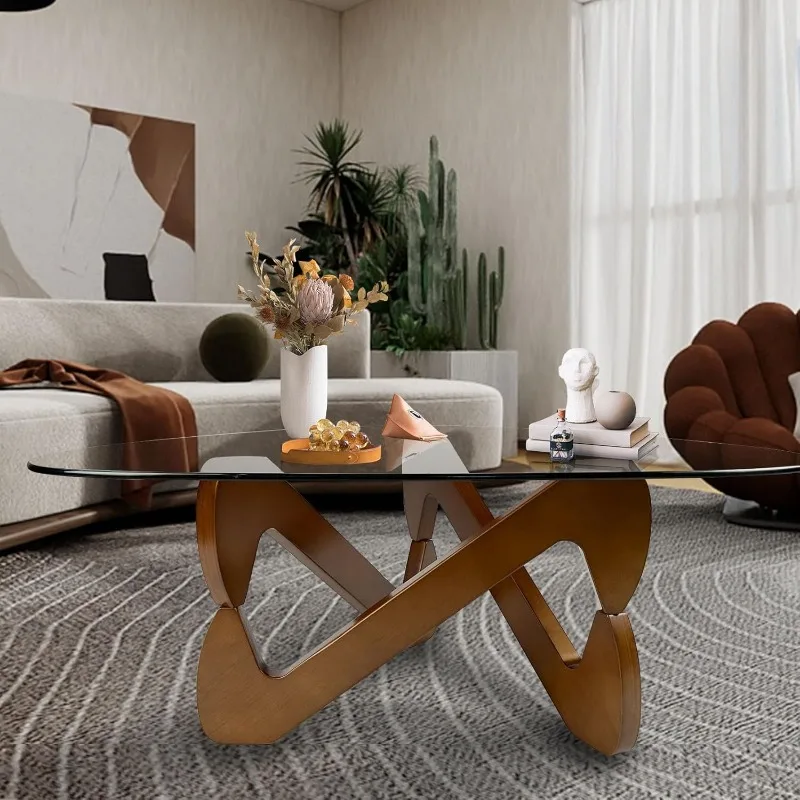
Table Styling That Enhances Space Perception
Strategic styling can visually transform rectangular tables, either emphasizing their linear qualities or softening them to create specific spatial effects.
Centerpiece Strategies
How you dress the center of your table dramatically affects spatial perception:
– Linear arrangements of low items (candles, small vases) emphasize length
– Clustered centerpieces create focal points that visually break long tables
– Graduated heights draw the eye upward, adding vertical dimension
– Negative space between styled elements maintains an open, airy feel
Table Runner Placement
The orientation and style of runners influence how we perceive table proportions:
– Traditional lengthwise runners accentuate linear quality
– Transverse runners (placed across width) visually shorten and widen tables
– Crosshatched or multiple perpendicular runners create grid patterns that segment visual space
– Textured or dimensional runners add depth without cluttering surface area
Seating Arrangement Impact
Chair selection and placement significantly affect the table’s presence:
– Matching chairs create formal continuity that emphasizes table shape
– Mixed seating adds visual interest that breaks up the linear effect
– Benches on long sides maximize seating while reducing visual clutter
– Upholstered chairs with substantial profiles soften the geometric precision of rectangular tables
Lighting Techniques
Thoughtful illumination transforms how rectangular tables function within a space:
– Linear pendant lights hung parallel to the table reinforce its shape
– Multiple hanging pendants create rhythm and prevent visual monotony
– Targeted spotlighting can highlight specific areas for different functions
– Candlelight or small lamps create intimate zones within larger table arrangements
These styling approaches complement the inherent design elements found in rectangular mid-century tables, allowing you to enhance their natural beauty while tailoring their impact to your specific space.
Industry-Specific Applications: From Residential to Commercial Spaces
Rectangular tables serve distinct functions across various environments, each with unique requirements and opportunities.
Residential Applications
Dining Rooms
– Formal dining: Centered rectangular tables with equal clearance on all sides create traditional, balanced spaces
– Casual dining: Off-center placement with banquette seating maximizes space efficiency
– Open-plan homes: Rectangular tables define the dining zone while maintaining visual connection to adjacent areas
Home Offices and Multipurpose Spaces
– Wall-adjacent placement allows rectangular desks to double as dining surfaces
– Peninsula arrangements (perpendicular to walls) create work surfaces that transition to dining or serving areas
– Central placement with versatile seating accommodates both work and entertainment
Outdoor Entertainment Areas
– Weather-resistant rectangular tables anchor patio spaces
– Long farm-style tables create gathering spaces for garden dining
– Multiple smaller rectangular tables offer flexible arrangements for varying group sizes
Commercial Applications
Conference and Meeting Rooms
– Executive boardroom setups with single large rectangular tables convey authority
– Training configurations with rectangular tables facing a presentation area optimize learning
– Collaborative arrangements with multiple rectangular tables promote team interaction
Restaurants and Cafés
– Banquette seating paired with rectangular tables maximizes customer capacity
– Communal tables create social dining experiences
– Modular rectangular units allow for quick reconfiguration based on party size
Educational Settings
– Classroom arrangements with rectangular tables support focused learning
– Laboratory setups with specialized rectangular workstations
– Library settings with rectangular study tables for individual or group work
Event Venues and Banquet Halls
– Flexible inventory of rectangular tables allows countless configuration options
– Standard dimensions facilitate efficient storage and transportation
– Consistent rectangular shapes simplify linen requirements and setup processes
The versatility of glass-top coffee tables in both residential and commercial settings demonstrates how thoughtful material selection enhances functionality across diverse environments.
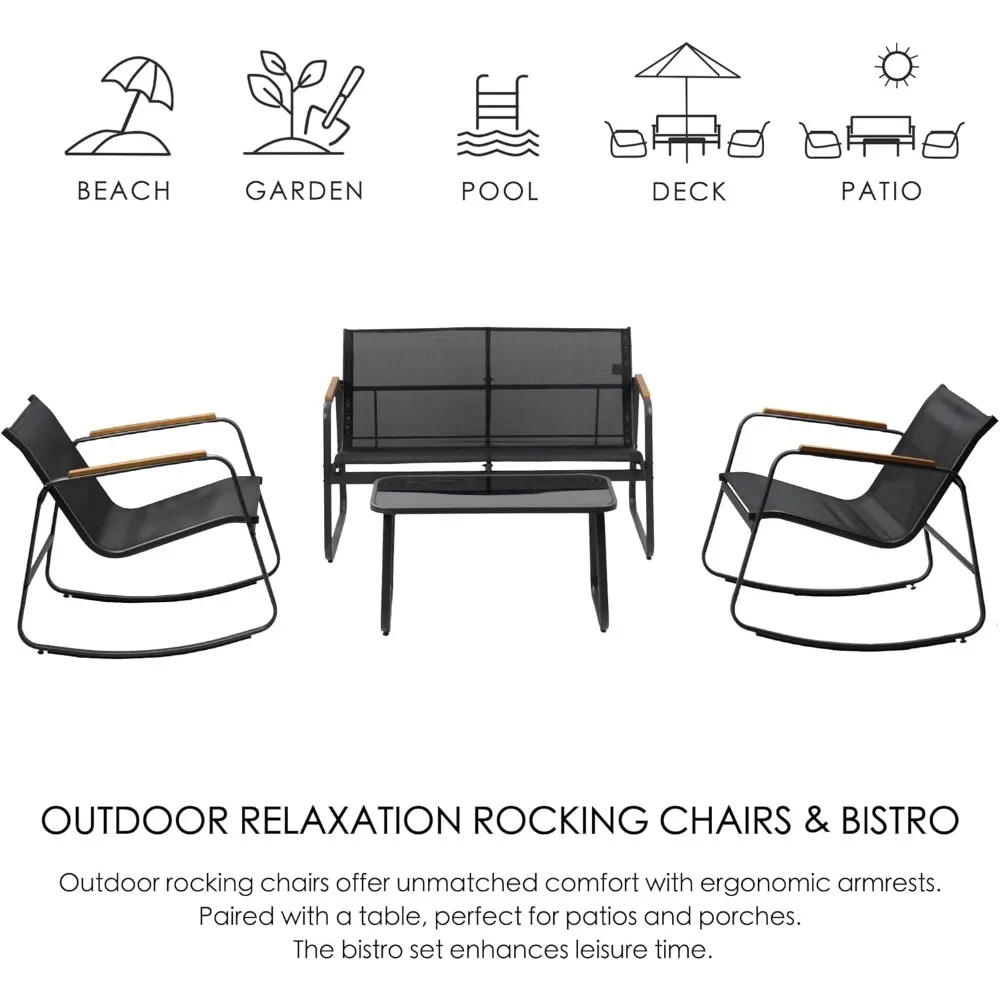
Is a Long Rectangular Table Right for Your Space? Key Decision Factors
Before committing to rectangular tables, evaluate these critical factors to ensure they’re the optimal choice for your specific situation.
What is the primary function of your space?
Spaces focused on presentation or direction benefit from the natural hierarchy rectangular tables create. Conversely, environments centered on equal participation might benefit from round or oval alternatives.
How many people need to be accommodated regularly?
For larger groups (8+ people), rectangular tables typically offer more efficient seating than other shapes. If your gatherings rarely exceed 6 people, you have greater flexibility with table shape.
What is the flow pattern in your room?
Analyze traffic patterns—rectangular tables excel in spaces with clearly defined entry and exit points where flow moves around rather than through the area. They can also effectively divide larger spaces into functional zones.
What are your room’s proportions?
Rectangular tables naturally complement rectangular rooms, reinforcing architectural lines. For square rooms, consider whether the table should be centered (suggesting equal importance to all walls) or positioned along one wall (creating a focal wall).
How flexible does your setup need to be?
If regular reconfiguration is necessary, multiple smaller rectangular tables offer more versatility than one large table. Consider whether extension options or nesting capabilities would benefit your changing needs.
When comparing options, understanding the differences between rectangular vs square coffee tables provides insights applicable to dining tables as well—both involve the same fundamental principles of proportion, function, and spatial relationship.
Mid-Century Modern Solid Wood Coffee Tables, Mid-Century Modern Teak Coffee Tables
$879.95 Select options This product has multiple variants. The options may be chosen on the product pageMid-Century Modern Danish Coffee Tables, Mid-Century Modern Oval Coffee Tables, Mid-Century Modern Solid Wood Coffee Tables
$390.05 Select options This product has multiple variants. The options may be chosen on the product pageMid-Century Modern Glass Top Coffee Tables, Mid-Century Modern Glass Top Side & End Tables
$460.58 Select options This product has multiple variants. The options may be chosen on the product pageMid-Century Modern Glass Top Coffee Tables, Mid-Century Modern Vintage Coffee Tables, Mid-Century Modern Vintage Side & End Tables
$725.36 Select options This product has multiple variants. The options may be chosen on the product pageMid-Century Modern Lift Top Coffee Tables, Mid-Century Modern Square Coffee Tables
$454.73 Select options This product has multiple variants. The options may be chosen on the product pageMid-Century Modern Large Coffee Tables, Mid-Century Modern Rectangular Coffee Tables
$603.26 Select options This product has multiple variants. The options may be chosen on the product page
FAQ: Solving Common Long Rectangular Table Challenges
How do I create intimacy with a long rectangular table?
Create intimate zones through strategic lighting, like multiple pendant lights hung at conversation height. Use table runners or placemats to visually segment the space. Consider centering floral arrangements or candles to create focal points that naturally gather people. For very long tables, slightly angling end sections creates subtle conversation pockets.
Can rectangular tables work for small gatherings of 4-6 people?
Absolutely! Position seating at the center of the table rather than spreading it to the ends. Use centerpieces to visually “shorten” the table by creating natural boundaries. For regular small gatherings, consider rectangular tables with drop leaves that can expand when needed but remain compact for daily use.
What’s the best shape to combine with rectangular tables for varied layouts?
Round tables complement rectangular tables beautifully in mixed arrangements. The curved edges provide contrast to the straight lines while offering different interaction dynamics. This combination works particularly well for events where you want both presentation-focused areas (rectangular) and discussion groups (round).
How do I balance aesthetics and functionality with rectangular tables?
Select tables with thoughtful details like slightly tapered legs, softly rounded corners, or interesting wood grain patterns that add visual interest without compromising function. Consider the understructure—clean designs with minimal crossbars offer both visual lightness and maximum legroom for comfort.
Are rectangular tables suitable for multi-purpose spaces?
Rectangular tables excel in multi-functional environments, especially when they include features like lift-top functionality that allows height adjustment. For maximum versatility, choose modular rectangular components that can be arranged individually or combined based on changing needs.
Modern Space Planning Tools for Perfect Table Arrangements
Today’s technology offers powerful solutions for visualizing and optimizing table arrangements before committing to a physical setup.
Digital Planning Software
Professional space planning applications allow precise placement of tables within accurate room dimensions:
– AutoCAD and other CAD programs offer technical precision for complex layouts
– SketchUp provides user-friendly 3D visualization for spatial relationships
– Event planning software includes specialized tools for optimizing guest seating
Mobile Planning Apps
Portable solutions provide on-the-go planning capabilities:
– Room planner apps with drag-and-drop furniture placement
– Augmented reality apps that visualize furniture in real spaces through your device’s camera
– Measurement apps that capture room dimensions accurately
Physical Planning Aids
Tangible tools remain valuable for hands-on planning:
– Scaled templates and furniture cutouts for manual layout testing
– Measuring tapes with extension capabilities for accurate room assessment
– Laser distance measurers for precise dimension capturing
Professional Services
Expert assistance ensures optimal results for complex projects:
– Space planning consultants with specialized experience in specific environments
– Event planning professionals with knowledge of flow and function
– Interior designers who balance aesthetic and practical considerations
Understanding the key design traits of rectangular coffee tables helps inform better planning decisions, regardless of which tools you employ in the process.
Case Study: Transforming a Challenging Space with Strategic Table Placement
A historic venue faced a significant challenge: accommodating 80 guests for a formal dinner in a long, narrow ballroom (20×60 feet) with structural columns every 15 feet along both sides. The columns created awkward alcoves and restricted traffic flow, while the narrow width limited layout options.
The Challenge
The standard banquet arrangement would have created a tunnel effect with compromised sightlines to the presentation area. Round tables would severely limit capacity due to inefficient space utilization. Additionally, the columns interrupted natural pathways for service staff.
The Solution
Rather than fighting the architectural constraints, the design team embraced them, implementing:
- A herringbone arrangement of 6-foot rectangular tables angled at 30 degrees to create improved sightlines toward the presentation area
- Strategic placement of tables to incorporate columns as natural dividers between dining sections
- Designated service stations within selected alcoves, turning constraints into functional assets
- Varied table orientations in each section to create visual interest and avoid monotony
The Results
This thoughtful arrangement successfully:
– Accommodated all 80 guests comfortably
– Created clear pathways for service staff between table groupings
– Improved sightlines for all guests during presentations
– Transformed architectural obstacles into design features
– Generated a dynamic visual experience that complemented the historic architecture
This approach demonstrates how creative thinking about large rectangular and round tables can transform seemingly problematic spaces into unique, functional environments.
How to Choose the Perfect Long Rectangular Table for Your Space
Selecting the ideal rectangular table involves balancing aesthetic preferences with practical considerations that ensure long-term satisfaction.
Essential Selection Criteria
Room Dimensions and Proportions
– Allow minimum 36 inches (91 cm) clearance from table edge to walls or furniture
– Choose table width proportional to room width (typically 1/3 to 1/2 of room width)
– Consider ceiling height—taller ceilings can accommodate visually substantial tables
Functional Requirements
– Determine maximum seating capacity needed for regular use
– Consider whether extension capabilities would be beneficial
– Evaluate storage needs (drawers, shelves) if the table serves multiple purposes
Material and Construction Quality
– Examine joinery details—mortise and tenon or dovetail joints indicate quality craftsmanship
– Assess wood quality through grain consistency and finish clarity
– Test stability by applying gentle pressure to corners
Design Coherence
– Consider how the table’s lines complement existing architectural features
– Evaluate how the finish coordinates with your color palette
– Look for design elements that reflect your personal style while maintaining timeless appeal
Adaptability Features
– Extension mechanisms should operate smoothly with minimal effort
– Consider height-adjustability for multipurpose applications
– Evaluate modularity options for changing spatial needs
The mid-century modern aesthetic offered by Hearth Forms provides an excellent foundation for versatile space planning. With their clean lines, honest materials, and human-scaled proportions, pieces like walnut coffee tables and their dining counterparts create spaces that feel both sophisticated and welcoming—the perfect balance for today’s multifunctional environments.

